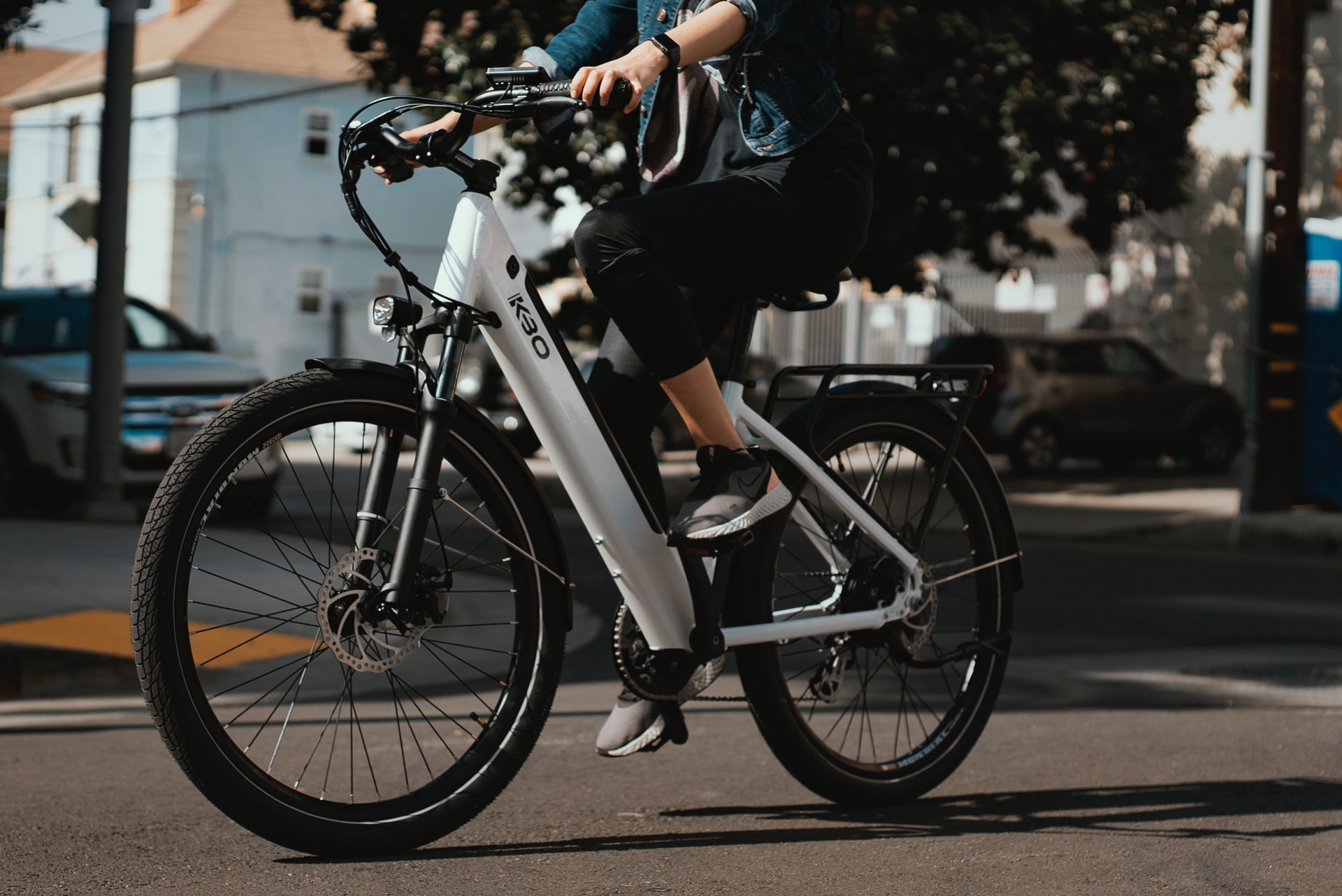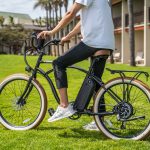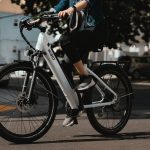An electric bike, also called an e-bike, is a bicycle that has an electric motor to help the rider pedal. E-bikes come in many different styles, but they all use a motor and battery to give the rider extra power while pedaling. E-bikes are getting more and more popular for mountain biking. This type of biking often takes place on rough, hilly trails. An e-bike can help a rider go farther and faster on these tough trails.
How do electric mountain bikes work?
E-bikes have a few main parts that make them work. These include a motor, battery, controller, and sensors. The motor provides extra power to turn the wheels. It only adds power when the rider is pedaling. There are different types and sizes of motors. More powerful motors help riders go faster or climb steeper hills. The battery stores electricity to power the motor. Lithium ion batteries are often used. These batteries can be charged by plugging them into a wall outlet. The controller manages how much power the motor delivers. Sensors tell the controller how fast the rider is pedaling. More pedaling means more motor power. Some e-bikes have a throttle the rider uses to control the motor directly.
Riders can choose how much the motor assists them on an e-bike. On most e-bikes, there are power settings. Lower settings provide less of a power boost. Higher settings give more assistance. The motor only engages when the rider pedals. On some e-bikes, the motor will keep the bike moving even if the rider stops pedaling briefly. The motor power is limited so the rider always has to pedal some for the e-bike to work.
What are the benefits of e-bikes for mountain biking?
Using an e-bike for mountain biking has some key benefits. One major benefit is that the motor allows riders to go farther into the backcountry on trails. The motor assist helps riders cover more distance and elevation than regular mountain bikes. Riders can explore new trails that would be too far to reach or too steep to ride up without motor help. E-bikes expand the possibilities for mountain biking adventures.
Another major benefit of e-bikes is they allow more people to enjoy mountain biking. The extra power from the motor helps beginners ride more challenging trails with confidence. Older riders who want to keep mountain biking but have less strength and stamina can also benefit from an e-bike. The motor provides the extra oomph needed to keep riding on tough terrain. E-bikes open up mountain biking as a sport to more riders.
Riders also like using e-bikes to help push their abilities and improve fitness. The motor allows riders to push themselves harder and longer when climbing hills or riding over distances. Riders can get in a more intense workout on trails with an e-bike. The motor assist helps prevent burnout on long backcountry rides. E-bikes can improve mountain biking skills and fitness when used this way.
What should you consider when buying an e-bike?
If you’re interested in getting an e-bike for mountain biking, there are several things to consider with the different models available. One key choice is the power and size of the motor. More powerful motors provide more assistance but use more battery and add weight. Look for a motor with just enough power for your regular trails and riding style. Lower powered motors around 250 watts are a good choice for average mountain biking.
The battery size and range are also important. Bigger batteries let you ride farther between charges but cost more. A battery with 10-20 mile range is usually enough for a mountain biking day. Consider how and where you will charge the battery too. Some batteries can be removed for charging anywhere. Others need to be plugged into the bike.
The bike’s design is another factor. Look for e-mountain bikes built tough to handle rough trails. Riders need stability at faster speeds on descents. Durable suspension, tires, and brakes are a must. Make sure the battery and motor are safely integrated and don’t affect handling too much. The e-bike still has to perform well as a mountain bike.
Finally, consider the cost. E-mountain bikes are more expensive than regular ones. Prices for quality e-bikes start around $2000 and up. Consider how often you will use the bike to decide if the cost is worthwhile for your needs.
What are the arguments against using e-bikes for mountain biking?
While e-bikes have clear advantages, some traditional mountain bikers argue they change the sport in negative ways. Critics point out that the motorized assist allows riders to go much faster on trails. Higher speeds can make accidents more likely and erode trails faster. Riders need to be sensible about speed.
There is also debate around access to trails. Some areas prohibit motorized bikes on non-motorized trails. Land managers fear the motor power impacts wildlife and other users. Riders need to know the rules for each trail system. Respecting access rules helps preserve the sport. Responsible riding is key.
Another concern is that e-bikes let riders go farther into the backcountry more easily. This puts inexperienced riders at higher risk of exhaustion, injury, or getting lost if unprepared. Proper skill, fitness, and trail knowledge are still essential. The motor can mask the real demands of mountain biking terrain.
Finally, e-bikes make the sport too easy to some. Using the motor assist seems like cheating. But e-bikes still require plenty of rider effort and skill. Riders ultimately control how much assistance they use. E-bikes don’t replace the need for proper mountain biking technique and training.
Beyond that, there is of course the discussions around the cost of replacing the ebike batteries. They don’t last forever so if you have the bike long enough you will likely have to replace the batteries (or upgrade them).
Conclusion
E-bikes are changing mountain biking. The electric motor assists greatly expand the possibilities on trails. More technical terrain, longer distances, and steeper climbs become accessible to more riders. But with this new opportunity comes responsibility. Riders must use e-bikes wisely, building skills gradually and respecting access rules and other trail users. Within these sensible limits, e-bikes offer an exciting new era in the evolution of mountain biking. The electric motor can enhance the riding experience for many. But the natural challenges of the trails remain paramount. At its core, mountain biking is still about the connection between rider, bike, and nature. E-bikes provide a modern way to explore limits within that special bond.






